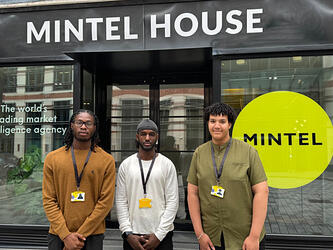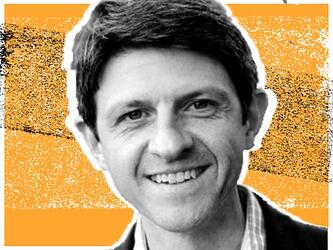From small seed to broad impact
Over the past few years, I have annoyed colleagues with my obsession with several fairly niche areas of human activity. Two of my most tedious hobby-horses have been the reluctance to adopt moist toilet paper and our glacially slow progress (until now) in adopting video-conferencing.
There is a method to the madness. Quite simply, I see these anomalies as a kind of Fermat’s last theorem of human behaviour – a puzzle to be solved not only because it’s challenging in itself, but because it may cast light on many other problems.
One of the mantras of Ogilvy’s behavioural science practice is ‘dare to be trivial’. In this we are influenced by complexity theory – you should never be afraid to suggest a tiny or seemingly oblique intervention, as they can have huge overall effects. There is another reason, too. Human behaviour doesn’t follow rules, but it does exhibit recurring patterns. Hence, patterns encountered in the purchase of Cadbury’s Creme Eggs might provide a template by which you could encourage the adoption of solar panels.
So, why did the magical possibility of remote meetings receive a lukewarm reception from businesses? Nobody is suggesting that all business travel is redundant – merely that some asymmetries might have been present that biased our behaviour against virtual meetings and, with it, more flexible working.
What might these asymmetries have been? The following theoretical list is not exhaustive:
- A threshold problem. The benefits of video-calling only become apparent above a certain level of use. If you still have to commute to work and then find a meeting room in which to make your video call, you might as well go the whole hog and stage a meeting.
- A habituation problem. Unless you use the technology fairly frequently, video-calling is cognitively difficult. This is akin to online grocery shopping, where the first use is inordinately more tiresome than the tenth.
- A signalling problem. Because it is easier to work from home, and it is painful to get up at 5am to meet a client in Frankfurt, we are biased in favour of adopting the more costly and difficult option to signal our commitment to our employer or client. We see remote working as a concession, not a choice, so we are reluctant to take advantage of it, as we feel we are burning reputational capital every time we do so.
- A ‘minority rule’ problem. If one person prefers a physical meeting to a virtual one, he or she can effectively prevent it from happening, regardless of the group’s overall preferences. Note that it is much more common for extroverts to bully introverts than the other way around.
- A ‘defensive decision-making’ problem. As a physical meeting is the default, there is no risk of blame – whereas, if you suggest a video-conference and it turns out badly, your neck is on the line.
Now we have a list of possibilities: either we find out which of these ‘biases’ is most significant and set about tackling it first (the ‘real why’), or we can try to invent a behavioural intervention that might overcome many or all of these biases simultaneously (the ‘universal what’). To use a medical analogy, you either find that the patient’s blood-group is A+ and administer A+ blood, or you administer O-, which will work regardless.
With my team, I discovered that merely permitting people to work remotely was not enough – they tended to see it as a privilege to be held in reserve. So, last year, I instigated Zoom Fridays. I worked from home and everyone else was encouraged to do the same. On one day a week, the prevailing defaults were reversed. People began to see beyond their asymmetric perceptual assumptions. From this small seed, after a few months, our video-calling grew from Mondays to Thursdays, too. We still met, of course, but the ratio of physical meetings to virtual was now closer to 50:50 than to 95:5.
There are many other examples where a targeted intervention has been shown to change behaviour more widely. Luca Dellanna performed an experiment that showed that a brief, fanatical focus on cleanliness in one small part of a factory floor led to a lasting improvement in cleanliness throughout.
Here we have a pattern. Brief, focused interventions can lead to lasting, self-reinforcing broadscale outcomes.
Do the biases outlined here also apply to the adoption of greener behaviours, or to the recruitment and promotion of BAME employees? What if Ogilvy instigated a two-year period during which it only recruited BAME staff? Would the ripple effects exceed the direct effects, in both scale and duration? There’s only one way to find out.
Rory Sutherland is vice-chairman of Ogilvy UK
This column was first published in the July 2020 issue of Impact.

We hope you enjoyed this article.
Research Live is published by MRS.
The Market Research Society (MRS) exists to promote and protect the research sector, showcasing how research delivers impact for businesses and government.
Members of MRS enjoy many benefits including tailoured policy guidance, discounts on training and conferences, and access to member-only content.
For example, there's an archive of winning case studies from over a decade of MRS Awards.
Find out more about the benefits of joining MRS here.












0 Comments